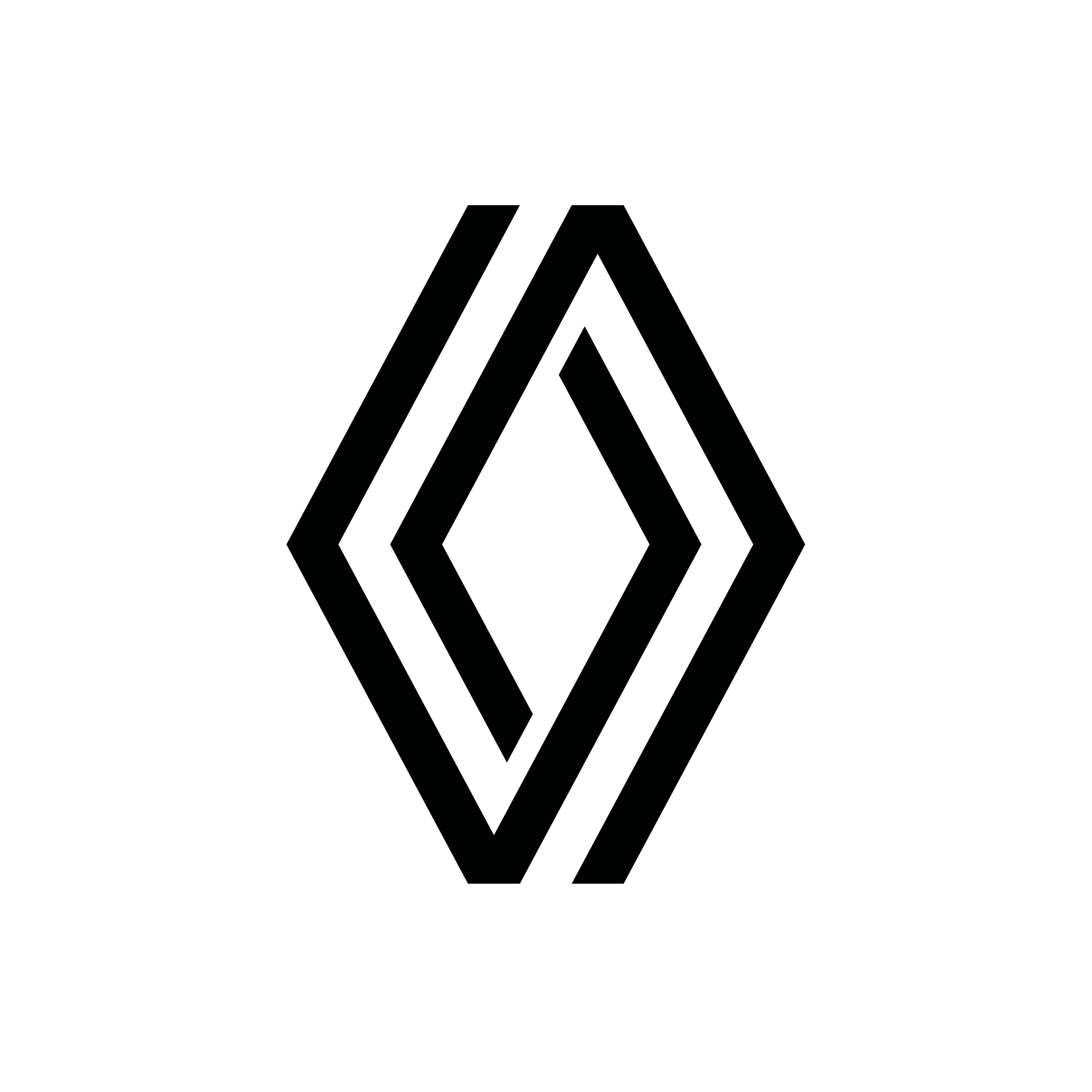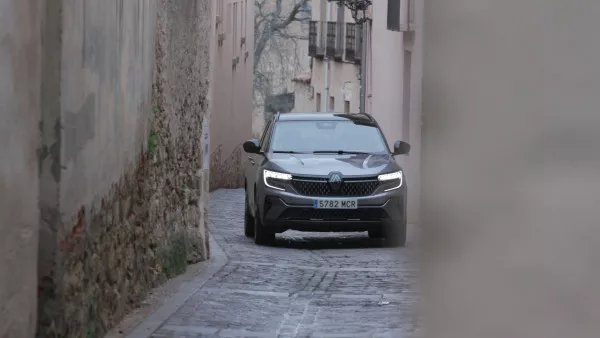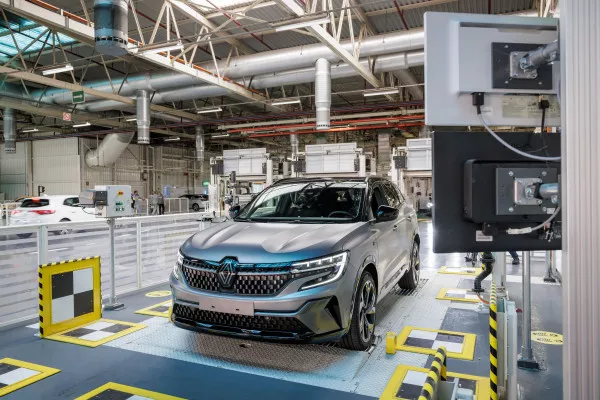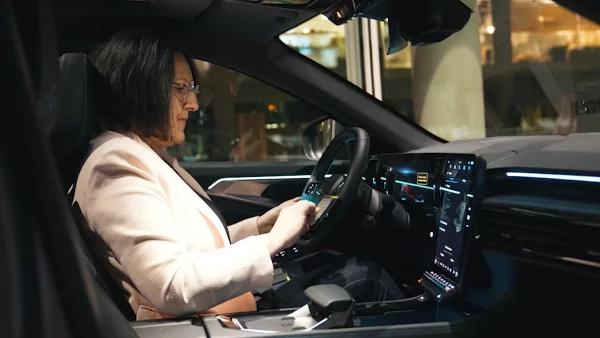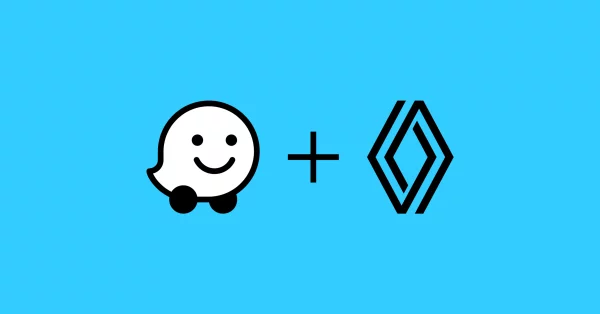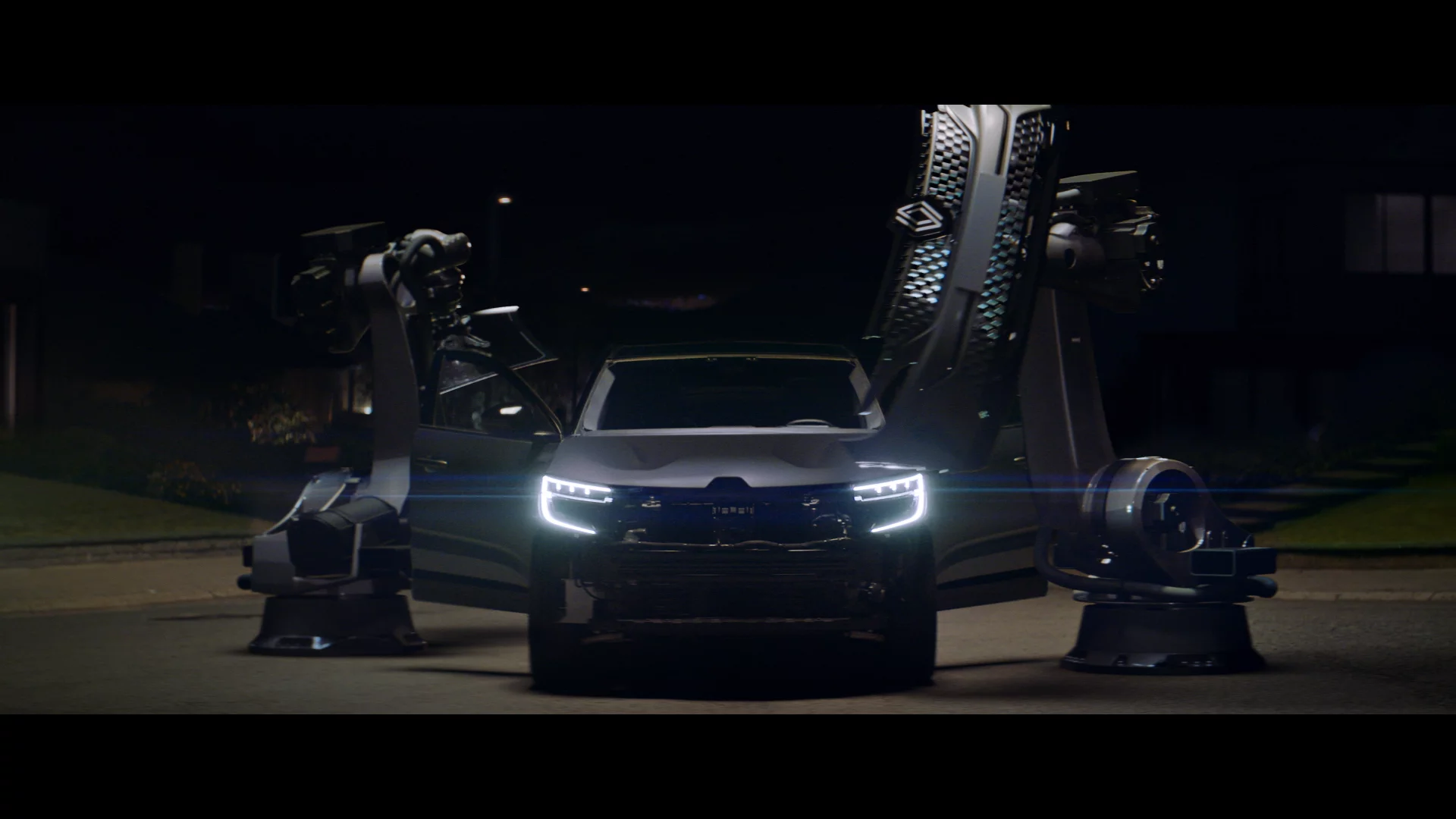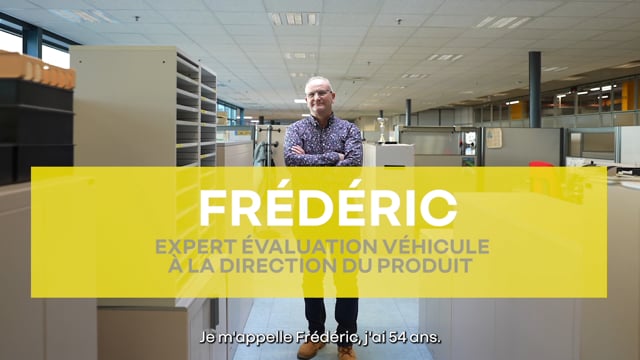Thinking like a customer behind the wheel of the All-new Renault Austral
The All-new Renault Austral is already on the road. The trials are coming to an end. At the wheel, Renault vehicle assessment experts – like Frédéric and Benjamin – are perfecting the final adjustments in real-life conditions. Read on for a behind-the-scenes look at their role before the launch of this new SUV, crucial to enable Renault to regain its C‑segment foothold.
02 March 2022
Frédéric and Benjamin sharing their feedback after All-new Austral test drive
Developing a vehicle project like the All-new Austral involves working collectively on all of the future car’s features. The list of those features is long and varied, and involves all areas: handling and road holding, comfort, braking, performance, consumption, ergonomics, connectivity and more. The objectives to be achieved with each feature are set from the start, based on the expectations and needs of the target customer. These objectives also take into account the brand promise that the product must embody, as well as the features of similar vehicles by competitors. Ultimately, designing a car means setting quantitative and qualitative targets for each feature and measuring the achievement of those targets throughout the development. And of course, the finished product – i.e., the production car – must be an appealing and rational choice for customers and the brand alike from start to finish of sales.
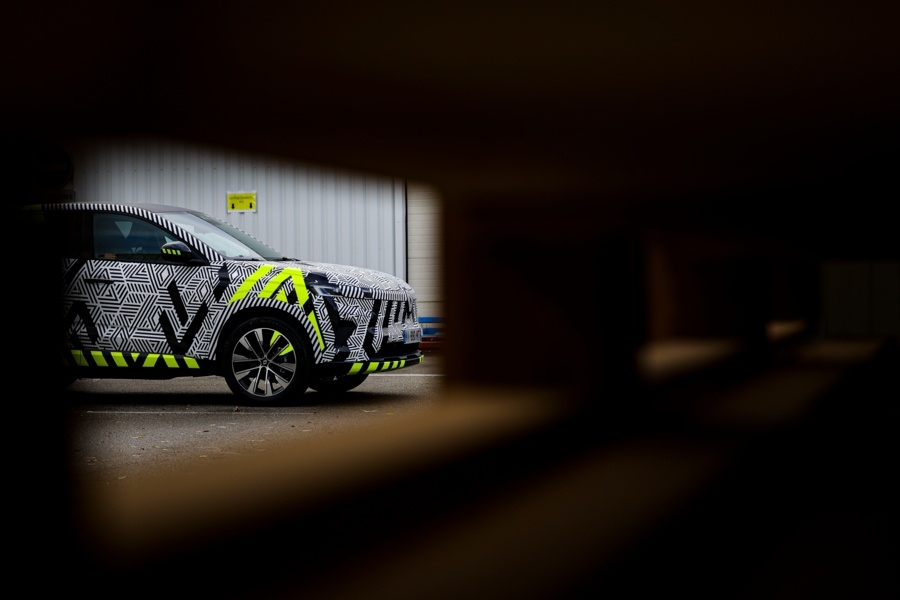
All-new Renault Austral’s final settings
Experts already behind the wheel of the All-new Renault Austral for a number of months
First of all, let’s get to know Frédéric and Benjamin, who are in charge of assessing the All-new Renault Austral. Frédéric is part of Renault Group’s Product Planning Department, which is responsible for determining topics upstream as well as the target customers and features of each new vehicle. Benjamin, meanwhile, works at Renault Group’s Engineering Department, which is responsible for defining technical solutions during the development of a vehicle like the All-new Renault Austral. Working with his team of engineers, Benjamin makes sure that all of the technology installed in the car works as expected from a technical point of view.
Benjamin and Frédéric have specific distinct roles, but their tasks overlap in one crucial area: sharing neutral and objective feedback about the vehicle in question. They are the ones who step into the customer’s shoes to check if the features of the All-new Austral are up to scratch. The two colleagues carry out their assignment together; working as a pair encourages them to compare and contrast their points of view.
"When I get behind the wheel of a prototype, I really put myself in the customers’ shoes – I feel and see what the customer would."
Frédéric, Chief Vehicle Assessment - Product Department
"To carry out our assignment, we deliver our take, which is based on our subjective feelings but formulated in a highly analytical way. We must be able to explain our opinions and back them up with facts from every area tested – roadholding, suspension, steering, breaking and performance, to name just the main characteristics."
Benjamin, Vehicle Synthesis Expert - Engineering Department
When working in a pair with engineering colleagues, Frédéric acts as a spokesperson for the technical specifications sent to the Engineering Department for each vehicle, which contain the essential expectations of the target customer. Frédéric is not directly involved with the technical design of the model itself, which means he has the perspective needed to assess the progress of all the vehicle projects he reviews. He gets involved in each project on a regular and ad-hoc basis to deliver an analysis of all his impressions. In the case of the All-new Austral, Benjamin and his team are the colleagues with whom Frédéric shares his analysis.
Benjamin, on the other hand, has monitored and directed the progress of the All-new Renault Austral’s technical development on a day-to-day basis. He, along with his team, acts like a guarantor for the technical solutions that have been chosen. He is therefore directly involved on a daily basis in defining and checking the relevancy of the range of technical solutions chosen for the car. And Benjamin, like Frédéric, is also responsible for focusing on the finished product by experiencing it in real-life conditions and from the end customer’s point of view.

All-new Renault Austral is already on the road
During a project’s lifecycle, there are often differences of perception and opinion that may influence the finish and completion of different features. What’s more, satisfying the initial targets can lead to technical difficulties or unexpected delays for implementation, or even additional costs. Naturally, the All-new Austral is no exception. But working as a pair offers an advantage; test experts can suggest adjustments more intelligently and often earlier on in the development process. This means they can find mature solutions. Having a sole team from a single entity carry out these assessments would probably be less efficient and run the risk of less stringent compromises being adopted, because they would face fewer challenges from the start.
“We get into a lot of debates, that’s for sure. But that’s part of the job – you can’t do it any other way. And the main thing is that we all look out for the customer’s best interests. We always end up not only finding common ground but, most importantly, the right solutions. It’s not always easy, but it is very rewarding”, said Benjamin.
Constantly high standards
Benjamin and Frédéric both studied engineering and their extensive and comprehensive professional training enables them to go further than simply expressing their feelings when they form an opinion during testing. Their findings are backed up by their solid technical background and in‑depth knowledge not only of all the vehicles in the Renault Group range, but also of competitors to the All-new Austral, which they have tested and studied in detail. Building on the experience and expertise that they have amassed throughout their careers, the two experts have acquired the legitimacy needed to express their opinion to the company’s executive management and directly and precisely steer technical work by the Engineering teams.
Frédéric explains, “if the vehicle we’re testing isn’t on the right track, we can express a negative opinion at a specific checkpoint. This means the project doesn’t go to the next phase of its development and the Engineering teams have to adjust their prototype.”
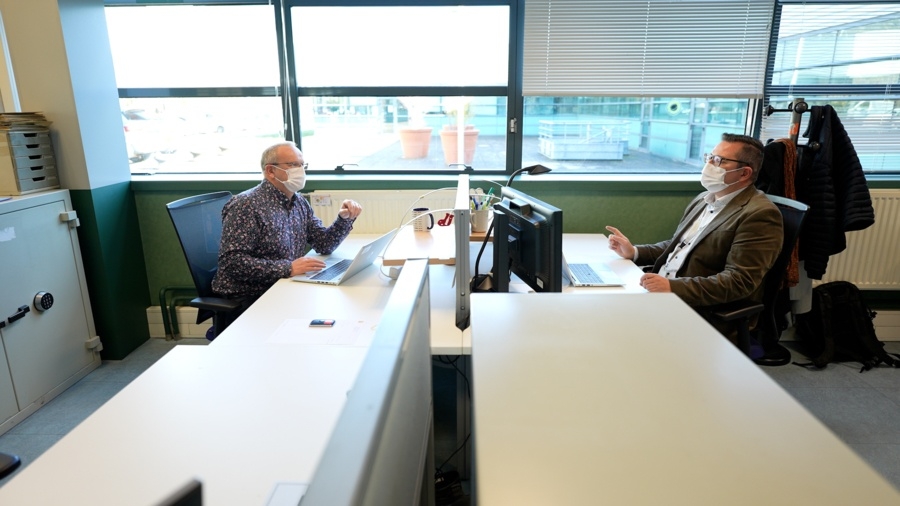
Frédéric and Benjamin’s feedbacks are very important for a project
In practice, Benjamin and Frédéric’s recommendations are submitted to the highest levels of the company if they need to report any obstacles or clarify any trade-offs to be made by the team managing the project. It’s a demanding task on all fronts, but Frédéric and Benjamin carry it out enthusiastically and meticulously – all over the world and in all driving and weather conditions. They spend over half their working time behind the wheel of prototypes in real-life conditions, on classic but also extreme roads. The high temperature tests, mostly carried out in southern Spain, and winter testing in Kiruna, Sweden’s most northerly city, for the All-new Renault Austral are events that sustain the test drivers’ interest in a profession that they must sometimes exercise in challenging or even extreme conditions. Although Frédéric and Benjamin now know all there is to know about these special tests, they still eagerly await their confidential assignments.
Speaking of secrecy and confidentiality, it is not unknown for curious onlookers to wonder what car is hiding behind the prototype’s inner and outer camouflage as it goes out on test drives. Our experts are therefore sometimes even photographed by surprised fans or paparazzi looking for a scoop. They may play along for a laugh, but they never disclose any secret information!
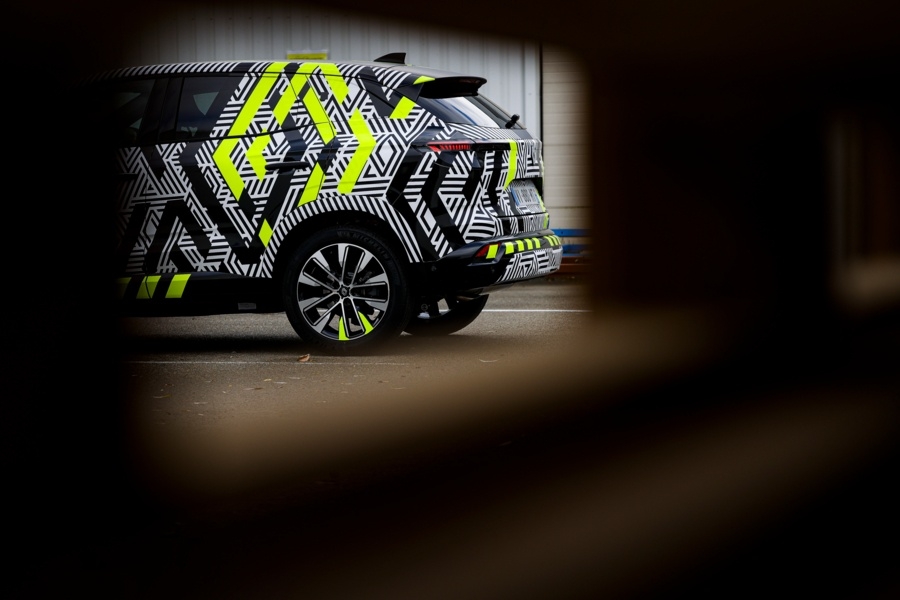
All-new Renault Austral is soon ready to conquest C segment
Harnessing prototypes, from test mules to productionThe assessment work for a future vehicle usually starts around 18 months before the car’s launch. That process begins by taking the “mule” for a spin – a prototype based on an existing vehicle, but featuring a different substructure, along with other new components and parts. With their altered bodywork and other visible differences, usually due to the size of the axle track and wheelbase, these mysterious vehicles stand out, but are hard to identify. Surprisingly camouflaged yet expertly assembled, these aptly-named technical hybrids are real workhorses. It is only later, around 12 months before the model goes on sale, and as trialling is nearing tests in real-life conditions that the prototypes take on a style and structural design similar to that of the production model. And at the end of development, these pre-series vehicles, which closely match those that will later go on sale, are used for the final tests to check general compliance. |
Renault, a historic mobility brand and pioneer of electric vehicles in Europe, has always developed innovative vehicles. With the ‘Renaulution’ strategic plan, Renault has embarked on an ambitious, value-generating transformation moving towards a more competitive, balanced and electrified range. Its ambition is to embody modernity and innovation in technology, energy and mobility services in the automotive industry and beyond.
médiathèque (21)
- tout (21)
- Images (20)
- vidéos (1)
Renault, a historic mobility brand and pioneer of electric vehicles in Europe, has always developed innovative vehicles. With the ‘Renaulution’ strategic plan, Renault has embarked on an ambitious, value-generating transformation moving towards a more competitive, balanced and electrified range. Its ambition is to embody modernity and innovation in technology, energy and mobility services in the automotive industry and beyond.
sur le même sujet
